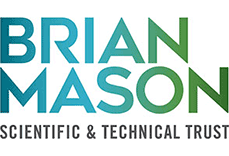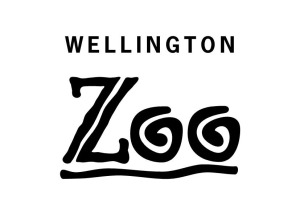
What are seabirds?
Seabirds find all, or most of their food at sea; by contrast, shorebirds (waders) feed along shorelines, in estuaries and lagoons. Only 360 of the worlds 9,000 bird species are true seabirds. 86 of these breed in the New Zealand region, including 38 which breed nowhere else. Other species that breed elsewhere visit New Zealand each year, and a number of others are recorded here from time to time. New Zealand is known as the world’s seabird capital.
What other seabirds are there on the West Coast?
Other than our two penguins and our very own petrel described on other pages, there are a variety of other seabirds that may be seen along the West Coast. Seabirds roam widely and are regularly seen far from their breeding colonies. Those most likely to be seen in our region are Australasian Gannet, White-capped Albatross, Sooty Shearwater, Cape Petrel, Fairy Prion, Spotted Shag, White-fronted Tern and Arctic Skua.
The West Coast Penguin Trust has a particular interest in the Sooty Shearwater and Fairy Prions through our Cape Foulwind and Wall Island project, and Blue or Spotted Shags, monitoring a couple of colonies on the coast, and these three are introduced below. You can read more on these and other seabirds on the NZBirdOnLine site.
Fast Facts
 Sooty Shearwater (Titi, Puffnus griseus): Sooty Shearwaters may lack the appeal of penguins or the grandeur of albatrosses, but these are the consummate seabirds; they can dive to depths of 60 metres and travel huge distances to feed on concentrations of crustaceans or small fish; some birds while breeding in New Zealand forage as far south as the fringe of the Antarctic pack ice.
Sooty Shearwater (Titi, Puffnus griseus): Sooty Shearwaters may lack the appeal of penguins or the grandeur of albatrosses, but these are the consummate seabirds; they can dive to depths of 60 metres and travel huge distances to feed on concentrations of crustaceans or small fish; some birds while breeding in New Zealand forage as far south as the fringe of the Antarctic pack ice.
Perhaps New Zealand’s most abundant bird, breeding in huge numbers on off-shore islands, but they are susceptible to predation and the small Cape Foulwind colony is one of very few surviving mainland colonies.
They are up to 46cm long and weigh up to 950g. They have long narrow wings, long slender black bill, narrow short tail, and dark grey legs and feet that barely project beyond the tail in flight. The upper parts are sooty brown while the underparts are slightly greyer with a silver-grey flash on the outer area of the underwings.
They are monogamous with shared incubation and chick care. The nest is lined with leaf litter and is in a chamber at the end of a burrow. Birds tend to return to the same area from year to year, but may not use the same burrow in successive years. A single large (77 x 40 mm) white egg is laid from late November to mid-December. Incubation takes 53-56 days; chicks fledge at about 86-106 days and are independent at fledging (late April to early June).
 Fairy Prion (Titi Wainui, Pachyptila turtur): The fairy prion is another abundant petrel, breeding on offshore islands around much of New Zealand. Slightly smaller than a red-billed gull, fairy prions are very similar in appearance to the five other prion species: delicate blue-grey and black above, and white below, with blue bill and legs. Small at just 25cm long and 120g, like all other petrels and other albatrosses, they have prominent external nostrils on the bill. Sadly, fairy prions, along with other prion species, are often found storm-wrecked on beaches exposed to the open ocean, especially on the west coast of both main islands, for example dying in hundreds of thousands after a prolonged storm lasting several days in 2011.
Fairy Prion (Titi Wainui, Pachyptila turtur): The fairy prion is another abundant petrel, breeding on offshore islands around much of New Zealand. Slightly smaller than a red-billed gull, fairy prions are very similar in appearance to the five other prion species: delicate blue-grey and black above, and white below, with blue bill and legs. Small at just 25cm long and 120g, like all other petrels and other albatrosses, they have prominent external nostrils on the bill. Sadly, fairy prions, along with other prion species, are often found storm-wrecked on beaches exposed to the open ocean, especially on the west coast of both main islands, for example dying in hundreds of thousands after a prolonged storm lasting several days in 2011.
The breeding season is earlier in the north, with peak laying of the single egg in mid-October at the Poor Knights, and early November on the Snares Islands. Incubation is shared and takes 44-54 days. The chick is left unattended during daylight when only 1-5 days old. One or both parents visit most nights and feed the chick by regurgitation right through to fledging at 43-56 days old. Young birds return to colonies when 2-3 years old, and first breed when 3-4 years old.
Fairy prions excavate their own burrows, or utilise caves and rock crevices. They breed as monogamous pairs, which typically remain together over many seasons. Fairy prions visit breeding sites after dark and depart before dawn, or stay in burrows or nest crevices during daylight. They mainly eat small pelagic crustaceans, along with small fish and squid.
 Blue or Spotted Shags (Kawau, Stictocarbo punctatus oliveri): The handsome Spotted Shag is known as the Blue Shag locally. Spotted Shags feed exclusively at sea within 15-16 km of their breeding or roosting sites, but, like other shags, lack the long-distance fight abilities of petrels, shearwaters and prions or the diving abilities of penguins. They are up to 74cm long and weigh up to 1200g.
Blue or Spotted Shags (Kawau, Stictocarbo punctatus oliveri): The handsome Spotted Shag is known as the Blue Shag locally. Spotted Shags feed exclusively at sea within 15-16 km of their breeding or roosting sites, but, like other shags, lack the long-distance fight abilities of petrels, shearwaters and prions or the diving abilities of penguins. They are up to 74cm long and weigh up to 1200g.
Adult spotted shags in breeding plumage are elegant and colourful, sporting a Mohican-like double crest, bright green-blue facial skin and blue eye rings. The species gets its name from the small black spots that appear near the tip of each back and wing covert feather during the breeding season. In flight, spotted shags appear slender and pale with a darker rump and tail. They usually fly low over the water using rapid wing beats.
Timing of breeding varies year to year and in different parts of the range, depending on food availability. Peaks of laying recorded in Hauraki Gulf are during March, August and December, at Matiu/Somes Island during June and November, at Banks Peninsula and Otago Harbour during September-November, and at Punakaiki on the West Coast during March-April and August-October. Spotted shags are monogamous; 3-4 pale blue eggs are laid in large nest platform made of sticks, ice plant and grass built 1m apart on coastal cliff ledges and stacks. Incubation and chick-rearing are shared and young leave the nest at 62 days. The oldest spotted shag recorded was over 10 years old.
Spotted shag diet consists of small fish and marine invertebrates, including squid and plankton. The longest dive recorded was 70 seconds. They often have a mass of small stones (‘rangle’) in the their gizzards, the function of which is debated with possibilities including ballast, to grind up food, and to create an inhospitable environment for gut parasites. Roosting birds often regurgitate piles of rangle stones that are obvious on sandy beaches but overlooked at rocky sites.
Where do they live?
 The Sooty Shearwater is perhaps New Zealand’s most abundant bird with a national population of over 13 million, the vast bulk of these nesting on islands surrounding Stewart Island or on The Snares Islands. On the West Coast they are uncommon with small colonies on some headlands and islands. Sooty Shearwaters enjoy an endless summer, in April migrating north to spend our winter off the coasts of Japan and Alaska. These shearwaters are often seen offshore. There is a small colony near the Seal Colony walkway at Cape Foulwind; after dark between November and April a few birds circle overhead before crash landing near their breeding burrows in amongst the flaxes.
The Sooty Shearwater is perhaps New Zealand’s most abundant bird with a national population of over 13 million, the vast bulk of these nesting on islands surrounding Stewart Island or on The Snares Islands. On the West Coast they are uncommon with small colonies on some headlands and islands. Sooty Shearwaters enjoy an endless summer, in April migrating north to spend our winter off the coasts of Japan and Alaska. These shearwaters are often seen offshore. There is a small colony near the Seal Colony walkway at Cape Foulwind; after dark between November and April a few birds circle overhead before crash landing near their breeding burrows in amongst the flaxes.
 Almost as abundant as the Sooty Shearwater, Fairy Prions nest on many islands from Northland to Stewart Island. Today West Coast prions nest only on those few tiny islands and rock stacks that remain free of introduced predators, but where they can find a suitable location, they nest in dense colonies of short and often fragile burrows.
Almost as abundant as the Sooty Shearwater, Fairy Prions nest on many islands from Northland to Stewart Island. Today West Coast prions nest only on those few tiny islands and rock stacks that remain free of introduced predators, but where they can find a suitable location, they nest in dense colonies of short and often fragile burrows.
 Spotted shags are entirely marine, breeding on the coasts of the North, South and Stewart Islands. The largest colony (with about 600 pairs) is at Perpendicular Point, and can be observed from Irimahuwhero Lookout north of Punakaiki. There is a smaller, more easily observed colony on Seal Island (Fox River) and birds can be seen roosting on coastal rocks elsewhere including the rock walls where the Grey and Buller Rivers flow into the Tasman Sea.
Spotted shags are entirely marine, breeding on the coasts of the North, South and Stewart Islands. The largest colony (with about 600 pairs) is at Perpendicular Point, and can be observed from Irimahuwhero Lookout north of Punakaiki. There is a smaller, more easily observed colony on Seal Island (Fox River) and birds can be seen roosting on coastal rocks elsewhere including the rock walls where the Grey and Buller Rivers flow into the Tasman Sea.
What are the threats?
Seabirds are impacted by a variety of human-related activities and introduced threats including fisheries interactions, disturbance, coastal development/habitat destruction, predators – stoats, rats and dogs, oil spills and other contaminants such as polyisobutene or PIB, heavy metals and other chemicals, plastic pollution and the less visible effects of climate change, changing weather patterns and changes in oceanic water temperatures leading to changes in prey distribution.
All seabirds are vulnerable to fishing operations including bycatch – the capture of seabirds on long-lines, hand-lines, set-nets, and trawl nets. Read more about ‘Protected species bycatch in New Zealand fisheries’ here (prepared by Dragonfly Data Science for the Ministry for Primary Industries).
Plastic poses perhaps the biggest and increasing threat to seabirds in New Zealand waters. It’s a small threat around New Zealand at present, but likely to become one of the biggest for seabirds. Modelling of the spread of plastic pollution has the southern Tasman Sea as a major area of concern. Read more from The Conversation here.
Before the arrival of rats and stoats, both prions and shearwaters were much more numerous with colonies on many West Coast headlands. They are almost entirely limited to predator free offshore islands now though some projects exist to protect them on mainland sites, for example at Cape Foulwind.
The West Coast Penguin Trust’s first project was to understand the land-based threats to blue penguins. We found that vehicles followed by dogs were the two biggest threats and we started putting in place measures to reduce mortality including the Pahutane penguin protection fence and an Education and awareness programme.
Our Education programme is a key part of our work and continues to grow. In addition, our attention has turned to:
- understanding marine threats for blue penguins through our GPS foraging study,
- a study of all the threats facing the Westland Petrel,
- a research project to establish the contribution of predators to the decline of Fiordland crested penguins in South Westland, and
- trapping projects to protect sooty shearwaters at Cape Foulwind and seabirds more generally on Wall and Seal Islands.





















